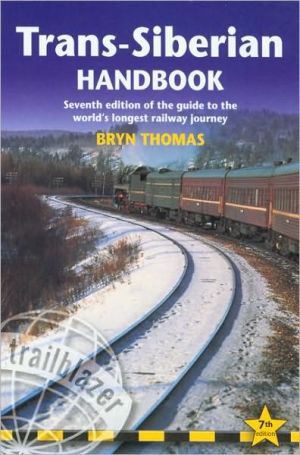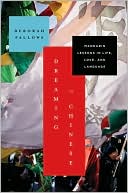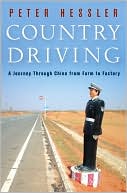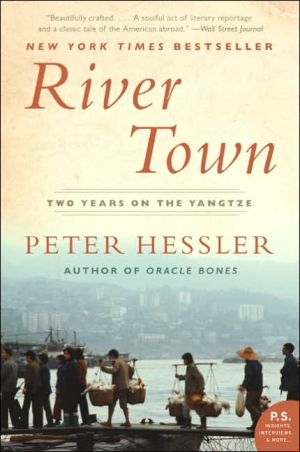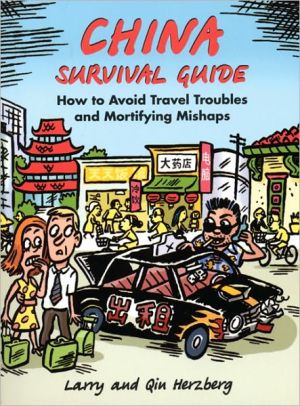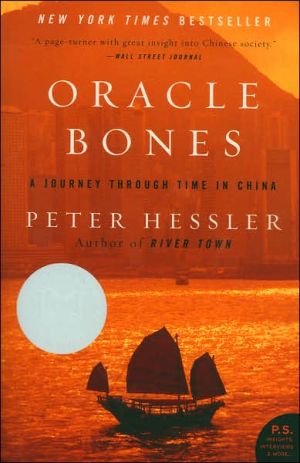Trans-Siberian Handbook: Guide to the World's Longest Railway Journey (Includes Guides to 25 Cities)
With over 90,000 copies now sold, this is the most popular Trans-Siberian guidebook. A trip across Siberia on the longest continuous railway track in the world is undoubtedly the journey of a lifetime. It's also a convenient way to reach China, Mongolia, or Japan. Tickets are not expensive or difficult to arrange. Readers can now travel almost anywhere they want in Siberia: we tell them how to organize a trip, where to get tickets, and where to go.\ >Kilometer-by-kilometer route guide --...
Search in google:
With over 90,000 copies now sold, this is the most popular Trans-Siberian guidebook. A trip across Siberia on the longest continuous railway track in the world is undoubtedly the journey of a lifetime. It's also a convenient way to reach China, Mongolia, or Japan. Tickets are not expensive or difficult to arrange. Readers can now travel almost anywhere they want in Siberia: we tell them how to organize a trip, where to get tickets, and where to go.•Kilometer-by-kilometer route guide -- covering the entire routes of the Trans-Siberian, Trans-Manchurian, and Trans-Mongolian railways with thirty-eight strip maps in English, Russian, and Chinese: readers can see where they are as they travel•Siberia and the railway -- the detailed history of Siberia, the construction of the railway and the running of the Trans-Siberian today are of great interest not only to visitors but also to armchair travelers•City guides with maps -- the best sights, places to stay, and restaurants for all budgets: Moscow, St Petersburg, Ulan Bator, Beijing, and twenty-three towns in Siberia•Nutshell information on Minsk, Berlin, Baltic Republics, Helsinki, Hong Kong, and Tokyo•Rail fares and timetables • Seventh edition includes seventy maps• Plus Russian and Chinese phrases
Introduction There can be few people who have not, at some time in their lives, wondered what it must be like to travel on the Trans-Siberian Railway - to cross Russia and the wild forests and steppes of Siberia on the world's longest railway journey. The distances spanned by this famous line are immense: almost 6000 miles (a seven-day journey) between Moscow and the Pacific port of Vladivostok (for boat connections to Japan) and just under 5000 miles (five days) between Moscow and Beijing.\ Ever since a rail service linking Europe with the Far East was established at the turn of the century, foreign travelers and adventurers have been drawn to this great journey. Most of the early travelers crossed Siberia in the comfort of the carriages of the Belgian Wagon Lits company, which were as luxurious as those of the Venice-Simplon Orient Express of today. Things changed somewhat after the Russian Revolution in 1917 and it became increasingly difficult for foreigners to obtain permits for Siberia. It was not until the 1960s that the situation improved and Westerners began to use the railway again for getting to Japan, taking the boat from Nakhodka (it now leaves from Vladivostok) for the last part of the journey. In the early 1980s, travel restrictions for foreigners visiting China were eased and since then many people have found the Trans-Siberian a cheap and interesting way to get to or from both the Middle Kingdom and Mongolia.\ In this jet age, the great advantage of going by rail is that it allows passengers to absorb something of the ethos of the country through which they are travelling: on a journey on this train you are guaranteed to meet local people for this is no 'tourist special' but a working service; you may find yourself draining a bottle of vodka with a Russian soldier, discussing politics with a Chinese academic or drinking Russian champagne with a Mongolian trader.\ Now a democracy with a market economy, Russia is undergoing phenomenal changes after decades of stagnation. While the ending of the Cold War may have removed some of the mystique of travelling in the former USSR, the fact that Russia is now much more accessible means that there are new travel opportunities right across the country. With foreigners no longer obliged to stay in overpriced Intourist hotels, visiting the country is cheaper now than ever before.\ Although travel in Siberia today presents few of the dangers and difficulties that it did earlier this century, a journey on the Trans-Siberian still demands a considerable amount of planning and preparation. The aim of this guide is to help you cut through the red tape when arranging the trip, to give background information on Russia and Siberia and to provide a kilometre-by-kilometre guide to the entire route of the greatest rail adventure - the Trans-Siberian.
INTRODUCTION (1) PART 1: PLANNING YOUR TRIP - Routes and costs (Route options, Costs, Breaking your journey, Internet resources), When to go, Bookings and visas, Organized tours or individual itineraries?, Route planning, Visas, Making a booking (in Britain, in Continental Europe, in North America, in Australasia, in South Africa, in Asia), What to take (Clothes, Gifts, Money, Background reading), Health precautions and inoculations (Inoculations, Medical services) (2) PART 2: RUSSIA Facts about the country (Geographical background, Historical outline, Economy, The people), Practical information for the visitor (Documents, Crossing the border, Where to stay, Tours, Local transport, Buying rail tickets, Electricity, Time, Money, Post/telecommunications, Magazines and newspapers, Holidays, Festivals, Food and drink, Buying your own food, Where to eat, What to do in the evening, Shopping, Crime) (3) PART 3: SIBERIA AND THE RAILWAY Historical outline (Early history, The nineteenth century, The exile System, Early travelers), Building the railway (Plans for a Trans-Siberian railway, The decision to build, Railway construction, The first rail travelers, The railway in the twentieth century), The Trans-Siberian today (The train, Life on the train, Steam locomotives in Siberia, Other railway lines (4) PART 4: CITY GUIDES AND PLANS St Petersburg (History, What to see, Excursions from St Petersburg, Local transport, Orientation and services, Where to stay, Where to eat, Moving on), Moscow (History, What to see, Excursions from Moscow, Local transport, Orientation and services, Where to stay, Where to eat, Moving on), Sergiev Posad (History, What to see, Practical information), Rostov-Yaroslavski (History, What to see, Practical information), Yaroslavl (History, What to see, Practical information), Vladimir (History, What to see, Excursions from Vladimir, Orientation and services, Where to stay and eat, Moving on), Suzdal (History, What to see, Practical information), Nizhny Novgorod (History, What to see, Practical information), Vyatka (Kirov) (History, What to see, Practical information), Perm (History, What to see, Practical information), Yekaterinburg (History, What to see, Practical information, Where to stay, Where to eat, Moving on), Tyumen (History, What to see, Practical information), Omsk (History, What to see, Practical information), Novosibirsk (History, What to see, Practical information, Where to stay, Where to eat, Moving on, Excursions from Novosibirsk: Akademgorodok, Tomsk), Krasnoyarsk ((History, What to see, Practical information, Where to stay, Where to eat, Moving on, Excursions from Krasnoyarsk), Irkutsk (History, What to see, Practical information, Where to stay, Where to eat, Moving on), Lake Baikal (Getting to Lake Baikal, Listvyanka, Port Baikal, Bolshie Koty), Other Siberian excursions (Bratsk, Severobaikalsk, Nizhneangarsk, Yakutsk), Ulan Ude (History, What to see, Ivolginsk Datsan, Orientation and services, Local transport, Where to stay, Where to eat, Moving on), Chita (History, What to see, Practical information), Birobidzhan (What to see, Practical information), Khabarovsk (History, What to see, Practical information, Where to stay, Where to eat, Moving on), Vladivostok (History, What to see, Practical information, Where to stay, Where to eat, Ferries, Moving on), Ulan Bator (History, What to see, Practical information, Where to stay, Where to eat, Moving on, Excursions), Harbin (What to see, Practical information), Beijing (History, What to see, Practical information, Where to stay, Where to eat, Moving on) (5) PART 5: ROUTE GUIDES AND MAPS Using this guide, Trans-Siberian route (Moscow - Vladimir - Nizhny Novgorod - Vyatka - Perm - Yekaterinburg - Tyumen - Omsk - Novosibirsk - Krasnoyarsk - Irkutsk - Ulan Ude - Chita - Bureya - Birobidzhan - Khabarovsk - Vladivostok (Maps 1-27)), Trans-Monglian route (Ulan Ude - Naushki - Sühbaatar - Darhan - Ulan Bator - Erlyan - Datong - Beijing (Maps 28-30)), Trans-Manchurian route (Chita - Zabaikalsk - Manzhouli - Angangxi - Harbin - Changchun - Shanhaiguan - Tianjin - Beijing (Maps 31-35)) (6) PART 6: DESTINATIONS AND DEPARTURES Tokyo, Hong Kong, Helsinki, Berlin, Budapest, Prague, Warsaw , Minsk, Tallinn, Riga, Vilnius) (7) APPENDICES Alternative route via Yaroslavl, Timetables, Siberian fauna, Bibliography, Phrase lists) (8) INDEX
